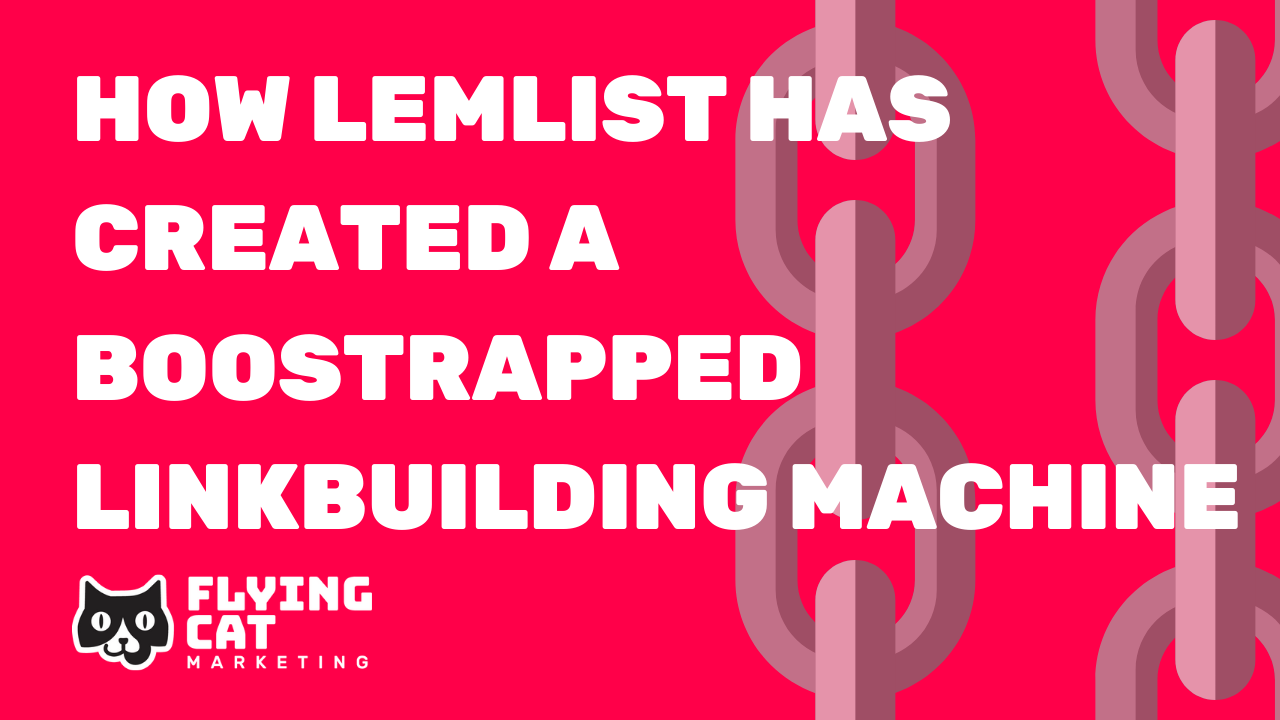Linkbuilding.
Something we all need, but that’s also fantastically annoying and mysterious.
Everyone has their different methods:
- The skyscraper technique: find the top posts and write something bigger and better – then simply steal the links!
- Broken linkbuilding: find the broken links on your competitors’ websites that other people are linking to. Decipher the content based on the URL slug and then write your own piece. Give the linkers your new, non-broken alternative!
- Guest posting: Write guest blog posts on other people’s blogs and link back to your own blog.
These are all commonly practiced and effective ways to gain links.
But they’re time-consuming, and mostly filled with a barrage of rejection – or worse, ghosting.
[tcb-script src=”https://www.buzzsprout.com/1399351/5853934-3-how-lemist-has-created-a-bootstrapped-linkbuilding-machine.js?container_id=buzzsprout-player-5853934&player=small” type=”text/javascript” charset=”utf-8″][/tcb-script]
In today’s article, I tell you the tale of my conversation with Ugi Djuric, Head of Content at lemlist (also a fellow animal-inspired content agency owner at Content Horse), who has a linkbuilding technique that’s easier and works better than the above.
In this article, I go over:
The story of lemlist and why I think they’re so cool
What their content strategy looks like
What their linkbuilding challenges are
How they define what a good keyword to rank for is
How they build links in a faster and easier way than the ones mentioned above (without paying)
Their secret to building links
Why guest blogging is still important
Ready? I am!
The story of the lempire and lemlist’s content strategy
I’ve been following lemlist for a while now.
lemlist is one of three SaaS companies that fall under the umbrella of lempire.
It’s a cold email tool that lets you personalize cold emails en masse.
What I love about them is that they’re fully bootstrapped – they’ve gone from $0 to $1M in ARR in under 2 years without any funding.
How did they do it?
A sweet combination of using their own tool to reach more people and building their community with content.
lempire is a content machine. When I started following them, Guillaume, the CEO, was writing all the content himself. They have a vibrant Facebook community, the Sales Automation family, where they have direct contact with customers or would-be customers and can source a lot of topics from there.
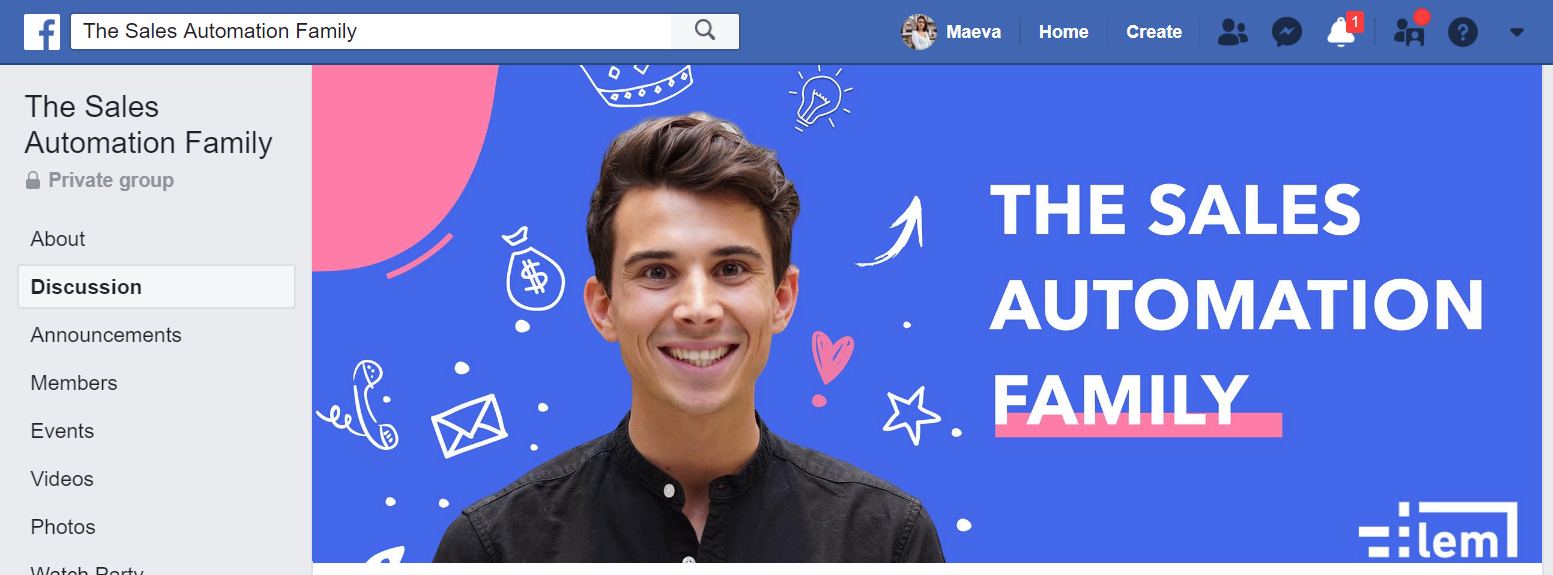
lemlist’s Facebook group: The Sales Automation Family, with a picture of the CEO, Guillaume Moubeche
Their main channel for traffic is SEO, mainly finding people with cold email templates.
Aiming to dominate the search space, there is one main challenge that did arise:
‘Cold email template’ is a hard, hard word to rank for.
So how did they manage it?
Challenges in lemlist’s content strategy: trying to rank for difficult keywords
Some people like challenges.
There are those people who purposely climb Mount Everest for no reason other than to do it.
Then there are others like to find the easiest and most optimized way to a challenging issue.
That’s what I call a marketer (marketers may also like climbing mountains, but that’s another story).
Marketing is challenging, but it’s all about finding the easiest paths to your goal.
So Ugi, Head of Content, had this challenge to get lemlist to rank for ‘cold email template’.
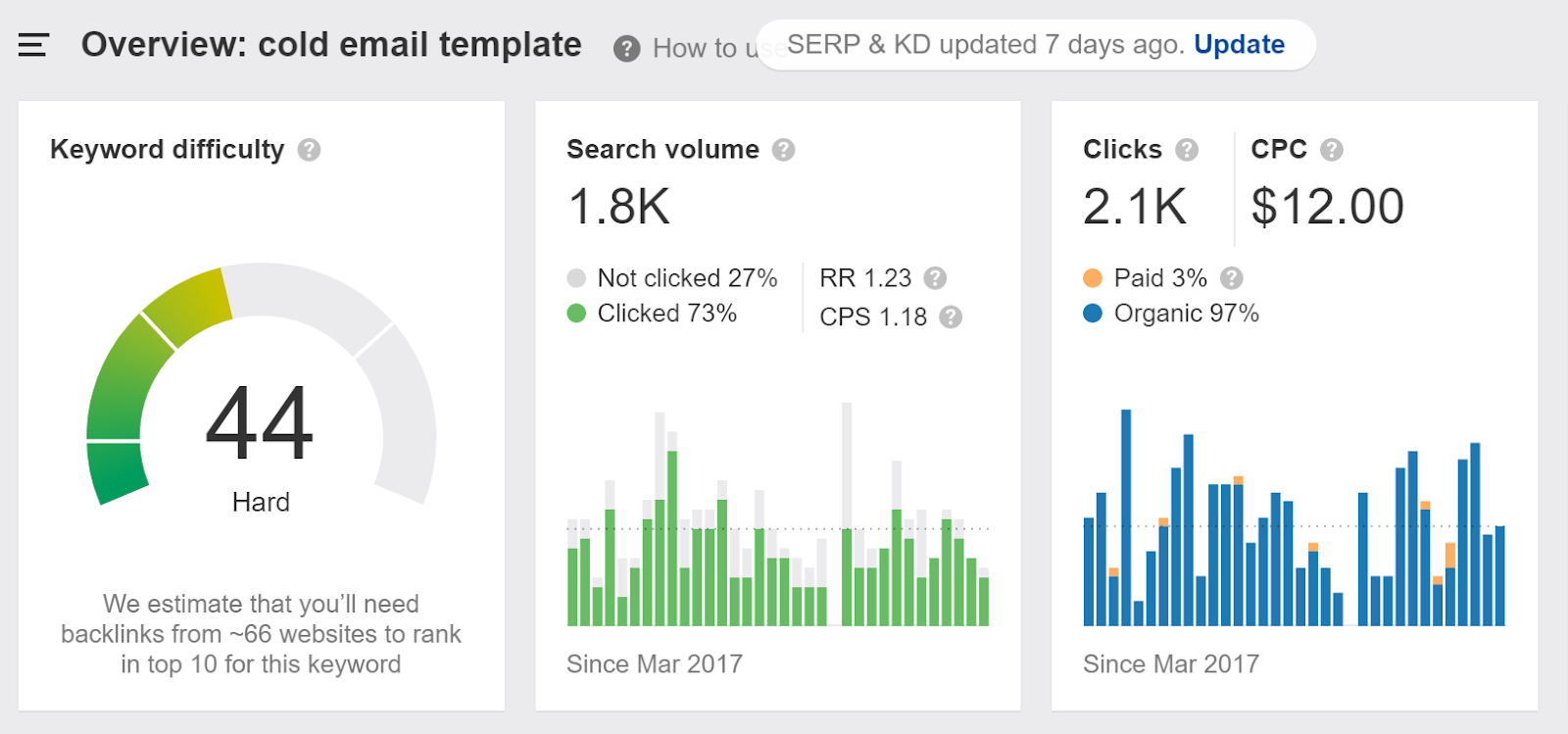
Ahref’s scores for the keyword “cold email template”
Ugi decided to move away from this crazy hard keyword and aim to rank only for long-tail keywords related to cold email template.
The goal?
To rank in the top 3 for these long-tail keywords.
I agree with Ugi that there is no need to try to rank for this specific keyword.
It’s going to be far too difficult.
Sure, the 1.8K search volume looks sexy and the challenge may be tempting – but we aren’t doing this for sport. We’re doing this to rank and to increase revenue.
You’re not very likely to reach many of those 1,800 searchers.
“The keyword “cold email template” is super, super hard to rank for,” Ugi told me.
“But there are like 15 other keywords, like cold email templates for web design agencies, cold emails for influencer outreach, etc. and other things that have a decent search volume like around 100 to 150 people per month. They’re easier to rank for.
Makes sense.
So going back to the drawing board, Ugi launched their new content strategy, which you will learn of in the next paragraph
Find out what content your customers actually want
We’re not gonna tell you what they want!
How should we know?
But we do know how to extract that information from them.
Download our free guide on how to interview your customers to guide a powerful content marketing strategy.
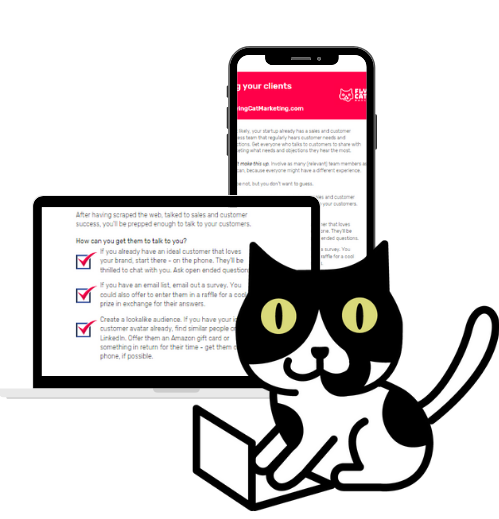
How lemlists chooses their keywords
Ugi has 3 parameters he follows to see if a keyword is good:
The keyword has some search volume. This is obvious but needs to be said (who knows who’s reading this?)
The domain authority of the websites ranking for the same keyword
The number of pages on Google trying to rank for the same keyword
PS: I use Ahrefs to find this information out, Ugi uses Mangools. Both show you search volume, DA, and their own scale of keyword difficulty.
Why does point 3 matter?
Some keywords can have a keyword difficulty of fifteen from 100 (on a Mangools scale), which is “super, super easy to rank for,” to quote Ugi.
But then when you checking Google, it has like tens of thousands of pages trying to rank for the same keyword. Which suddenly makes it seem harder.
Even though the keyboard difficulties slow, it can be really hard to rank on the first page.
Again, marketing isn’t for sport – it’s about finding the easiest and most optimized way to results.
So in his linkbuilding strategy, Ugi finds keywords that are related to his main keywords.
Very specific, long-tail keywords.
We’ll talk about how he builds links to them (without needing to deal with competition) below.
lemlist’s content strategy: one month writing, one month linkbuilding
The subheading pretty much says it all.
With the aim to focus on one thing at a time (of which I am a big fan), Ugi got the team’s buy-in to spend one month writing content and one month building links.
They alternate that way which allows him stay productive and maintain balance between production and distribution. Meaning greater ROI.
In his writing month, free of any other distraction, he can generate about 20 articles.
In his backlinking month, he’s found the secret sauce to generating 80 backlinks.

lemlist has 2.6k backlinks, according to Ahrefs – so something’s working!
Here’s how.
A free linkbuilding strategy that consumes less time
lemlist’s linkbuilding strategy doesn’t involve the skyscraper technique or broken linkbuilding. They don’t like things that aren’t scalable.
Basically his technique is this:
He identifies articles on the web that talk about a similar subject to the article he’s building links to.
His article can be a nice fit and addition.
For example, if he wants to build links to his Cold Email Outreach Guide, he does this:
He looks for articles about the best cold email templates.
The topics are correlated, but not competing.
Instead of trying to steal links from other websites, he offers them some value add to their current article.
The secret to getting links: it’s all in the outreach
The keyword technique is important, but without the right outreach, it still won’t work.
Ugi’s motto is to always deliver more value to the person whom you’re asking for a link.
I forgot to mention. I met Ugi through one of his linkbuilding campaigns. He reached out to me to get a link from my personal blog, Maeva Everywhere, because I have an article about cold emails that’s on the first page of Google.
Here’s the email he sent me:
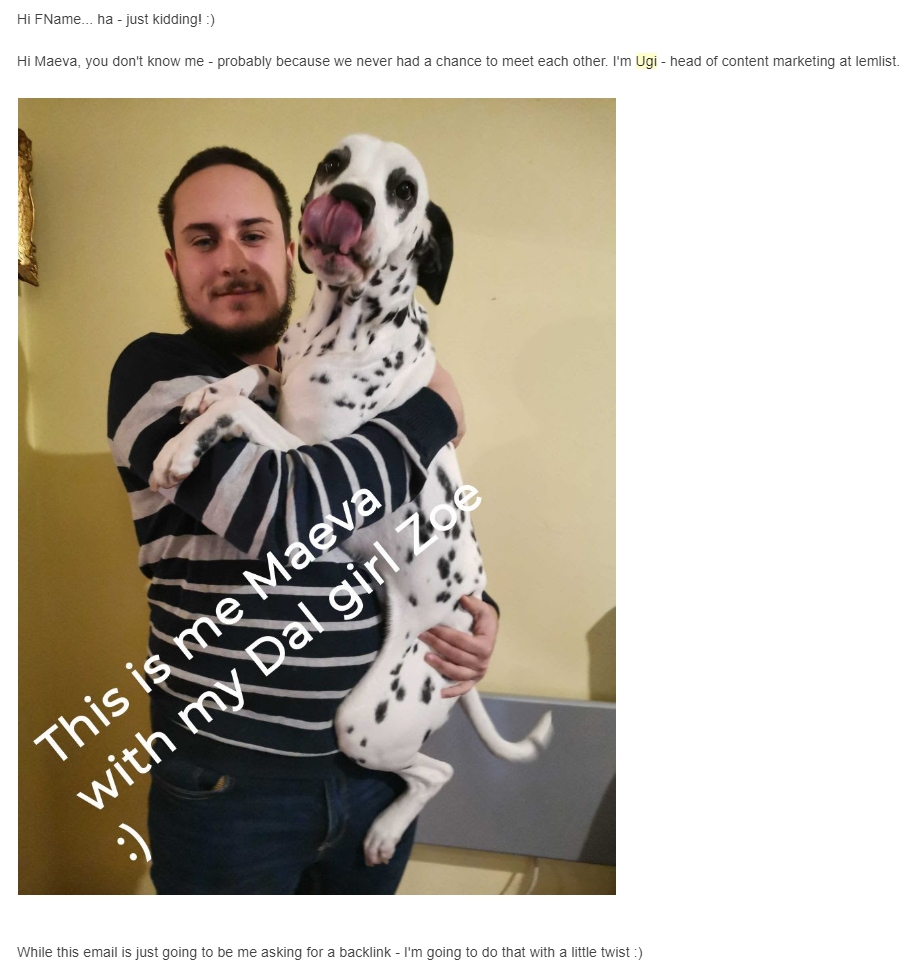
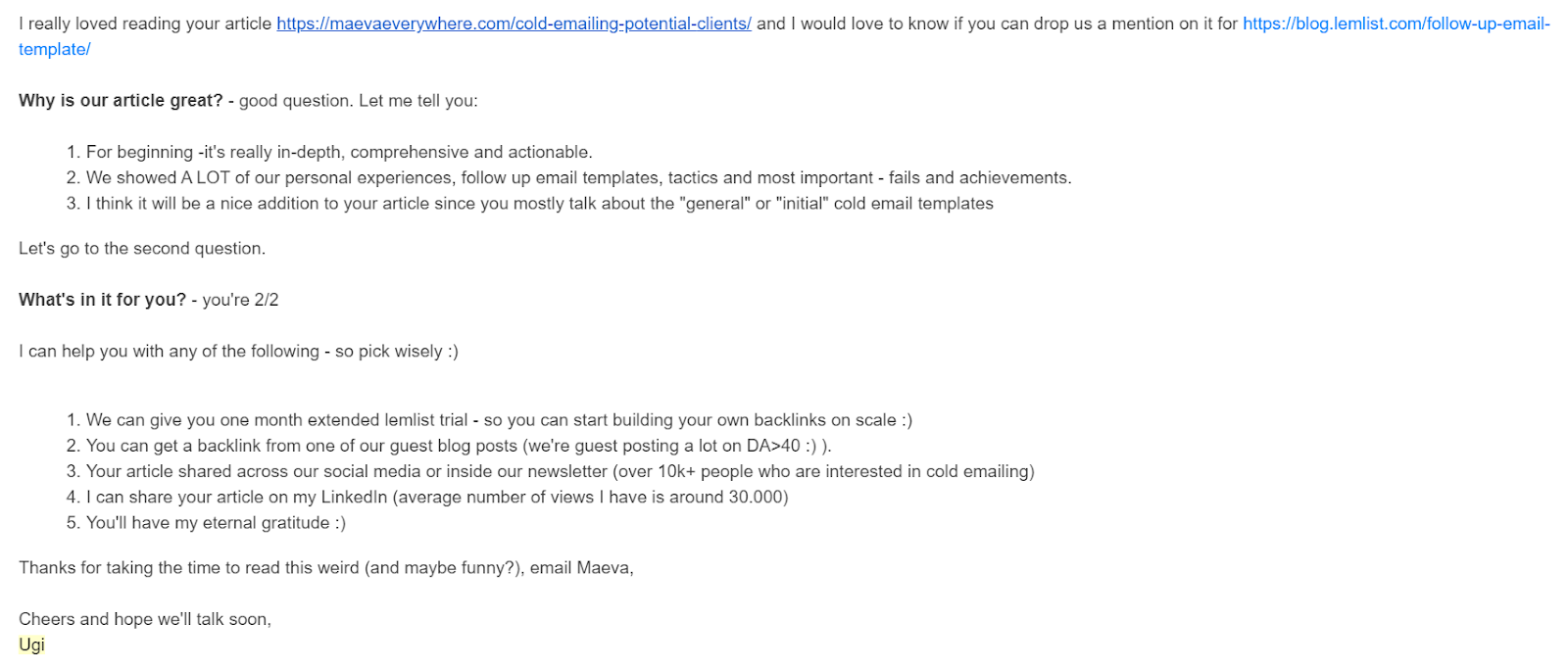
You can see the formula – he’s funny and it’s personalized – and there’s a big plus for including a picture of his doggie.
He explains why his article is useful but what made me reply was the “What’s in it for you” part.
He’s offering me a link back in a DA 40 blog.
Do I want that?
Is the atomic weight of Cobalt 58.9? (Yes)
That’s it, that’s his secret. I give him a link, he gives me one back – not on his own blog. That’s a no-no for Google, but he offers something that makes this email worth my time.
He also offers, as you can see, an extended free trial of their cold email tool and a few other things.
So lemlist’s secret linkbuilding formula is this:
Find articles that are similar to the one you want to rank for, but not the same
Ask them to add a link as added value to their article and readers
Offer them something valuable in return
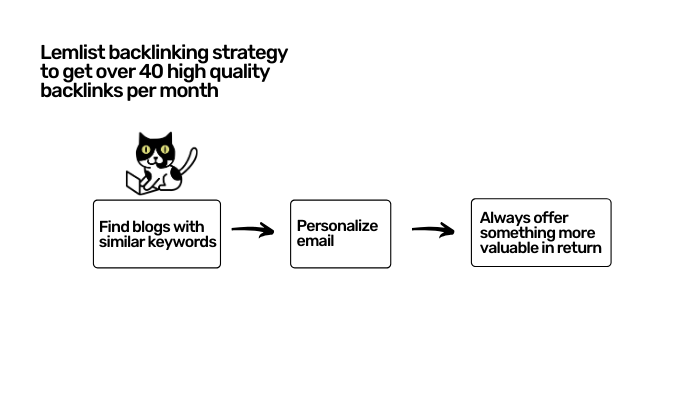
Is guest blogging still important though?
Guest blogging is still one of the most effective methods of linkbuilding.
But it takes forever and isn’t hyper scalable cause you still need to write the guest blog post.
Ugi and lemlist still do guest blogs – partly as a part of their linkbuilding strategy, partly because it helps build their brand’s authority and reputation.
But one great reason is because it helps him keep his part of his linkbuilding deal.
In return for links, he needs to give links to other people.
If you promise somebody a link back, you can’t just throw it in your own blog. Google notices that. So he has to give the link in another blog.
So he writes guest blog posts to help their reputation but also to give the promised links back from his campaigns. Win-win for everyone.
How’s your linkbuilding going?
Tell me in the comments about your linkbuilding journey – do you understand it? Have you done any for your startups?
If you found this article helpful, please share it!
Connect with Ugi on LinkedIn
Want to receive these expert interviews, how-tos guides and tips straight to your inbox? Sign up to the Flying Cat Marketing email list. Only value, no spam.
